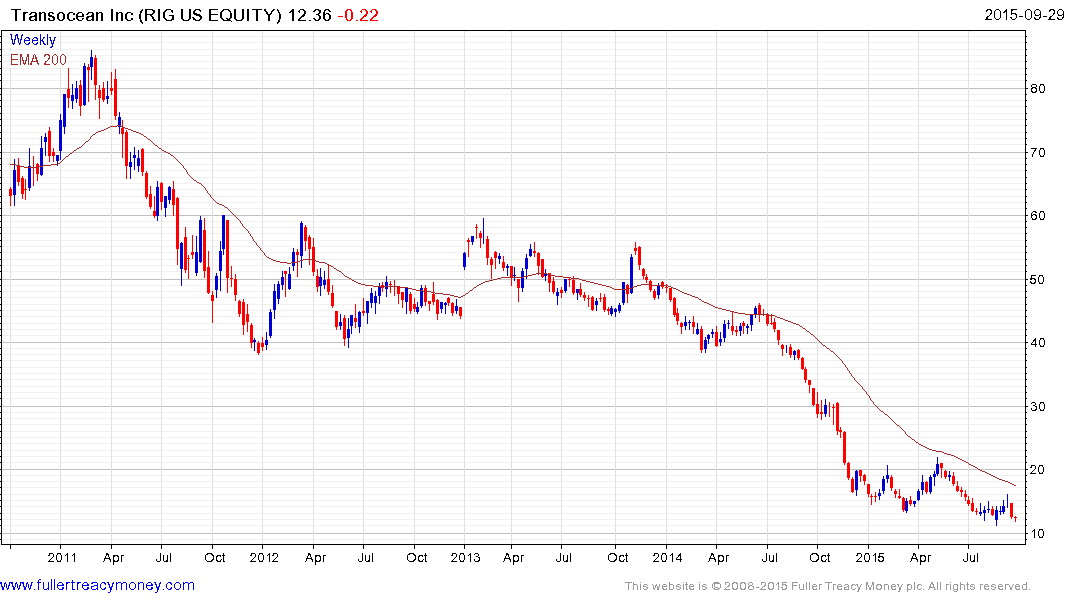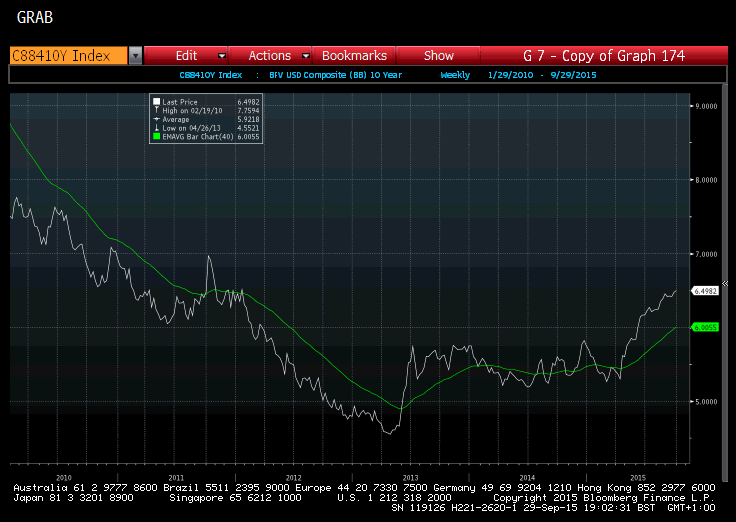How to Fix the Offshore Drilling Industry
Thanks to a subscriber for this report from Deutsche Bank which may be of interest. Here is a section:
The overwhelming consensus view is that “deepwater is dead” or structurally impaired. We strongly disagree. The tried and true path to long-term success in energy investing is to “go where the oil is” and that is in deepwater where reserve additions have outpaced shallow water by 3.2x and onshore by 45% (1.3x excluding oil sands). Our field by field analysis suggests long-term (10 year) demand for 320 floating rigs (vs. 225 currently active and a total fleet – including expected newbuild deliveries - of about 385 today). The bad news is that near-term demand remains weak with a rig-by-rig analysis suggesting demand will bottom at 194 rigs in 2H ‘16. A similar analysis of the jackup market implies trough demand of 328 by YE ‘16 (vs. a fleet of about 570 rigs).
Reality bites: Industry to tackle structural supply issues
Rig attrition has begun to take hold with 43 floaters retired in the current cycle to date and an additional 28 floating units cold-stacked with most of those unlikely to return to the market. Although a significant increase relative to the last several years, these actions have only removed 14% of deepwater capacity (23% including stacked units) even as roughly 75 newbuilds remain on order so the fleet will still see net growth absent more aggressive action. The news is worse on the shallow water front, where only 52 units have been retired and 57 stacked (10% and 20% of the global fleet, respectively). With the oil price testing new lows again recently, backlog dwindling and hopes for a near-term demand recovery fading rapidly, the industry now seems more realistic about the need to take more decisive action on capacity reduction. We see scope for as many as 70 floaters and 110 additional jackups to exit the fleet over the next 12-18 months, although we believe the floater market will come into balance sooner given its better secular demand outlook, higher degree of consolidation and greater differentiation between newbuild and older units.
Here is a link to the full report.
The decline in oil prices continues to take a toll on the drilling and services sector with a large number of consistent downtrends in evidence. Inevitably this is putting the most strain on the most highly leveraged operations and rationalisation is a virtual certainty the longer prices remains close to current levels.

There is strong commonality in the offshore drilling sector with Transocean being representative. It continues to make new lows and a break in the medium-term progression of lower rally highs will be required to signal short covering.

The US Dollar BB 5-year Composite Index broke out of a first step above the Type-2 base in April and continues to extend the move. At close to 6.5% yields are now back to levels last seen in 2011 and a sustained move below 6% would be required to question potential for further expansion. High yield energy bonds such as those of Transocean yield almost double the average at 12.89%.
.png)
Petrobras is now also BB rated and its 2021 US Dollar bullet bond yields 14%. The paradox of the bond market is that the companies which issue the most debt generally tend to have the most liquid issues and therefore represent the largest weightings in bond indices. This is despite the fact they are the most indebted. Petrobras continues to trend lower and a significant bullish catalyst would be required to check momentum.


